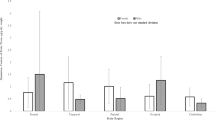Abstract
At the present time there seems to be sufficient evidence to conclude that aluminium may, at least under some circumstances, be neurotoxic. Furthermore, several studies have found increased amounts of aluminium in specific brain structures of people who have died with Alzheimer's disease. From the available evidence it is not possible, however, to draw any firm conclusions regarding the possible role of aluminium in the aetiology or pathogenesis of Alzheimer's disease.
Even though there is some evidence from ecological studies that exposure to aluminium at least from drinking water may be causally linked to the development of Alzheimer's disease, it is still entirely possible that the accumulation of aluminium in the brains of people with this disorder is a secondary phenomenon. There is a lack of data relating individual exposure to aluminium with subsequent risk of developing the disease.
A case-control study currently being carried out in Norway will seek to collect individual exposure data with particular emphasis on aluminium exposure from drinking water sources. The design of this study is presented.
Similar content being viewed by others
References
Ackrill, P. 1988. Clinical aspects of dialysis encephalopathy.Environ. Geochem. Health, (this issue).
Arieff, A.I. 1988. Aluminum and the pathogenesis of dialysis dementia.Environ. Geochem. Health, (this issue).
Crapper McLachlan, D.R. 1986. Aluminum and Alzheimer's disease.Neurobiol. Aging,7, 525–532.
Flaten, T.P. 1986. An investigation of the chemical composition of Norwegian drinking water and its possible relationships with the epidemiology of some diseases. Thesis No. 51, Institutt for uorganisk kjemi, Norges Tekniske Høgskole, Trondheim.
Flaten, T.P. 1988. Geographical associations between aluminium in drinking water and death rates with dementia (including Alzheimer's disease), Parkinson's disease and amyotrophic lateral sclerosis in Norway.Environ. Geochem. Health, (this issue).
Ganrot, P.O. 1986. Metabolism and possible health effects of aluminum.Environ. Health. Perspectives,65, 363–441.
Garruto, R.M., Yanagihara, R. and Gajdusek, D.C. 1988. Models of environmentally induced neurological disease: epidemiology and rtiology of amyotrophic lateral sclerosis and Paikinsonism-dementia in the Western Pacific.Environ. Geochem. Health. (this issue).
Hill, A.B. 1965. The environment and disease: association or causation?Proc. Roy. Soc. Med.,58, 295–300.
Martyn, C.N. 1988. Unpublished results.
Rothman, K.J. 1987.Modern Epidemiology. Little, Brown & Co., Boston.
Schlesselman, J.J. 1987. “Proof” of cause and effect in epidemiologic studies: criteria for judgment.Prevent. Med.,16, 195–210.
Vogt, T. 1986. Water quality and health — study of a possible relation between aluminium in drinking water and dementia.Sosiale og økonomiske studier, 61 (English abstract). Central Bureau of Statistics of Norway, Oslo.
Weiss, N.S. 1981. Inferring causal relationships. Elaboration of the criterion of “dose-response”.Am. J. Epidemiol.,113, 487–490.
Author information
Authors and Affiliations
Rights and permissions
About this article
Cite this article
Houeland, T. Aluminium and Alzheimer's disease: is there a causal connection?. Environ Geochem Health 12, 173–177 (1990). https://doi.org/10.1007/BF01734066
Issue Date:
DOI: https://doi.org/10.1007/BF01734066




